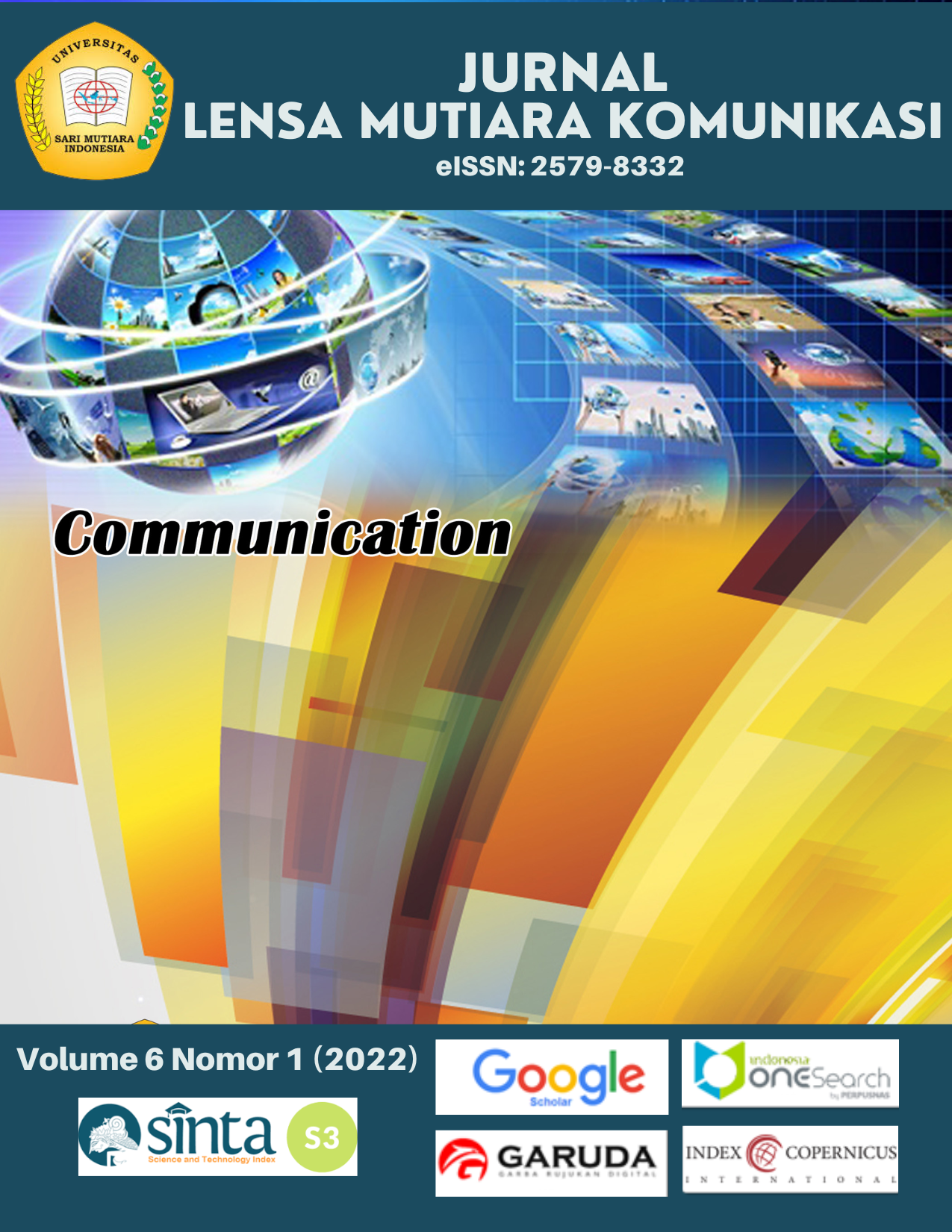Branding “Tara La No Ate” pada Indonesia Creative Cities Festival (ICCF)
Main Article Content
Abstract
The first aspect of the promotion of communication strategies can be concluded as "Tara La No Ate” branding at the 2019 Indonesia Creative Cities Festival (ICCF) aiming to revive, promote, and introduce Ternate as a Creative Economy City, and also as tangible evidence of the implementation of the communication promotion strategy and branding “Tara La No Ate which becomes the theme and raises local wisdom from the city of Ternate so that the use of the media can be the manifestation of the communication promotion strategy process. The second aspect of the branding elements at the 2019 ICCF in Ternate is to convey a positive image contained in the message in the series of events which becomes part of the local wisdom and history that exists in Ternate and is shown to stakeholders and the wider community to be known directly through the 2019 ICCF performance. The branding elements include brand name, logo, visual appearance, spokesperson, voice, and remarks related to ICCF 2019 in Ternate
Downloads
Article Details
References
Bunging, M. B. (2011). Penelitian Kualitatif. Kencana Prenada.
Cangara, H. (2006). Pengantar Ilmu Komunikasi. Rajawali Pres.
Diniarum, F. A. (2019). Strategi Branding PT. Berkah Catering Nusantara Di Sidoarjo. Surabaya. In Digilib Uinsby (Issue 2). Universitas Islam Negeri Sunan Ampel Surabaya.
Djaslim, S. (2001). Marketing Management, Analysis, Planning, Implementation and Control. Lindakarya.
Fahri, J., & Ahmad, F. M. (2021). Branding of Ternate City. Society, 9(1), 252–263. https://doi.org/10.33019/society.v9i1.297
Karsono, K., Purwanto, P., & Salman, A. M. Bin. (2021). Strategi Branding Dalam Meningkatkan Kepercayaan Masyarakat Terhadap Madrasah Tsanawiyah Negeri. Jurnal Ilmiah Ekonomi Islam, 7(2), 869–880. https://doi.org/10.29040/jiei.v7i2.2649
Kotler, P., Keller, K. L., & Sabran, B. (2009). Manajemen Pemasaran (13 Jlid 2, p. 412). Erlangga.
Lestari, K. T. (2020). Pola Komunikasi Kelompok Sadar Wisata (Pokdarwis) Dalam Mengembangkan Pantai Kelapa Panyuran Tuban Sebagai Destinasi Wisata Berbasis Kearifan Lokal. Journal of Chemical Information and Modeling, 53(9), 1689–1699. https://doi.org/http://u.lipi.go.id/1487661056
Miles B., Matthew. & Hubberman, A. M. (1992). Analisis Data Kualitatif. Universitas Indonesia.
Moekijat. (1993). Teori Komunikasi (1st ed.). Penerbit Mandar Maju.
Mulyana, D. (2017). Ilmu Komunikasi: Suatu Pengantar (21st ed.). PT Remaja Rosdakarya.
Ohorella, N. R., & Prihantoro, E. (2022). Konsep Relationships Tourism dalam Pariwisata Maluku Berbasis Kearifan Lokal. Jurnal Lensa Mutiara Komunikasi, 1, 155–162. https://doi.org/doi: https://doi.org/10.51544/jlmk.v5i2.2284
Robin, L. (2006). Designing Brand Experience. Thomson Delmar.
Sadjim U, Noeng M, FX, S. (2016). Revitalisasi Nilai-Nilai Bhinneka Tunggal Ika Dan Kearifan Lokal Berbasis Learning Society Pascakonflik Sosial Di Ternate. Jurnal Pembangunan Pendidikan: Fondasi Dan Aplikasi, 4(1), 79–91. https://doi.org/https://doi.org/10.21831/jppfa.v4i1.7227
Shimp, T. (2003). Perikalanan Promosi: Aspek Tambahan Komunikasi Pemasaran Terpadu (1st ed.). Erlangga.
Sugiono. (2017). Metode Penelitian Kuantitatif, Kualitatif, dan R&D. Penerbit CV. Alfabeta.
Sulaksana, U. (2003). Integrated Market Communications. Pustaka Pelajar.
Susanti, S., & Koswara, I. (2021). Komunikasi Pemasaran Pengrajin Bambu Kreatif di Tasikmalaya. 2, 1–8.
